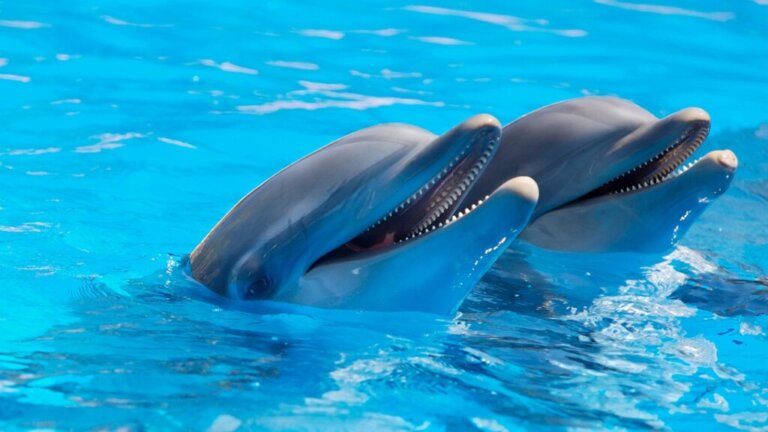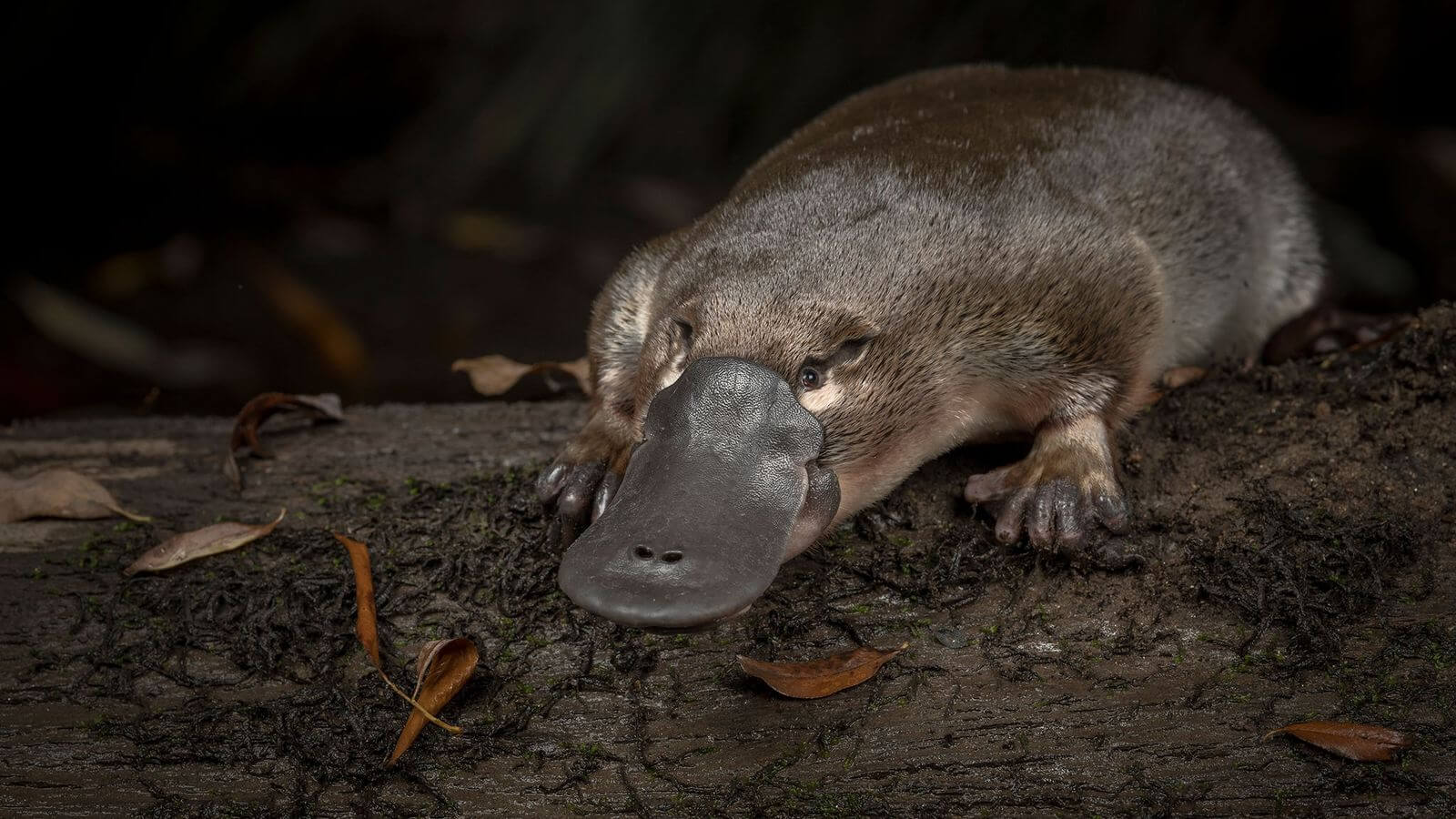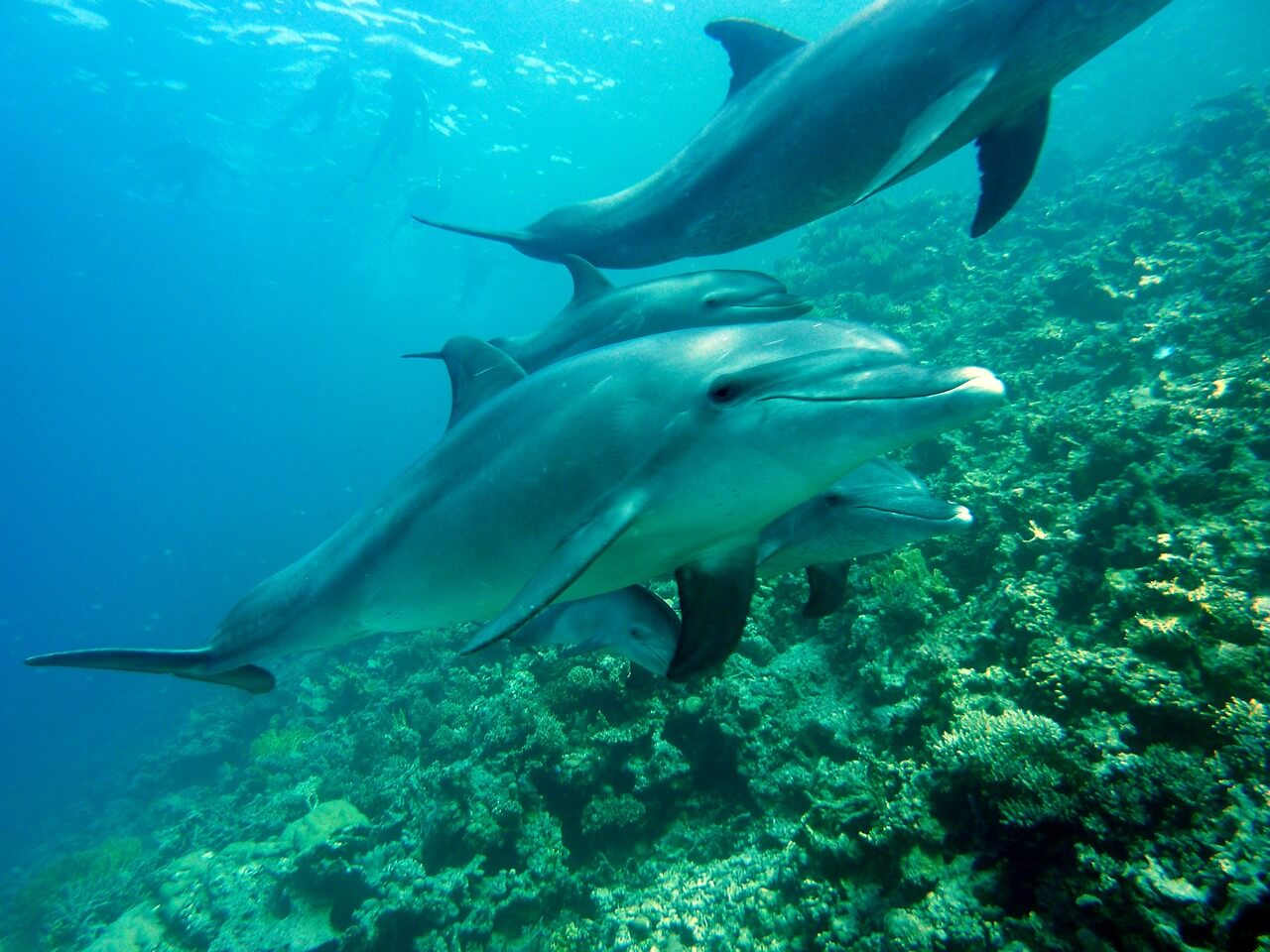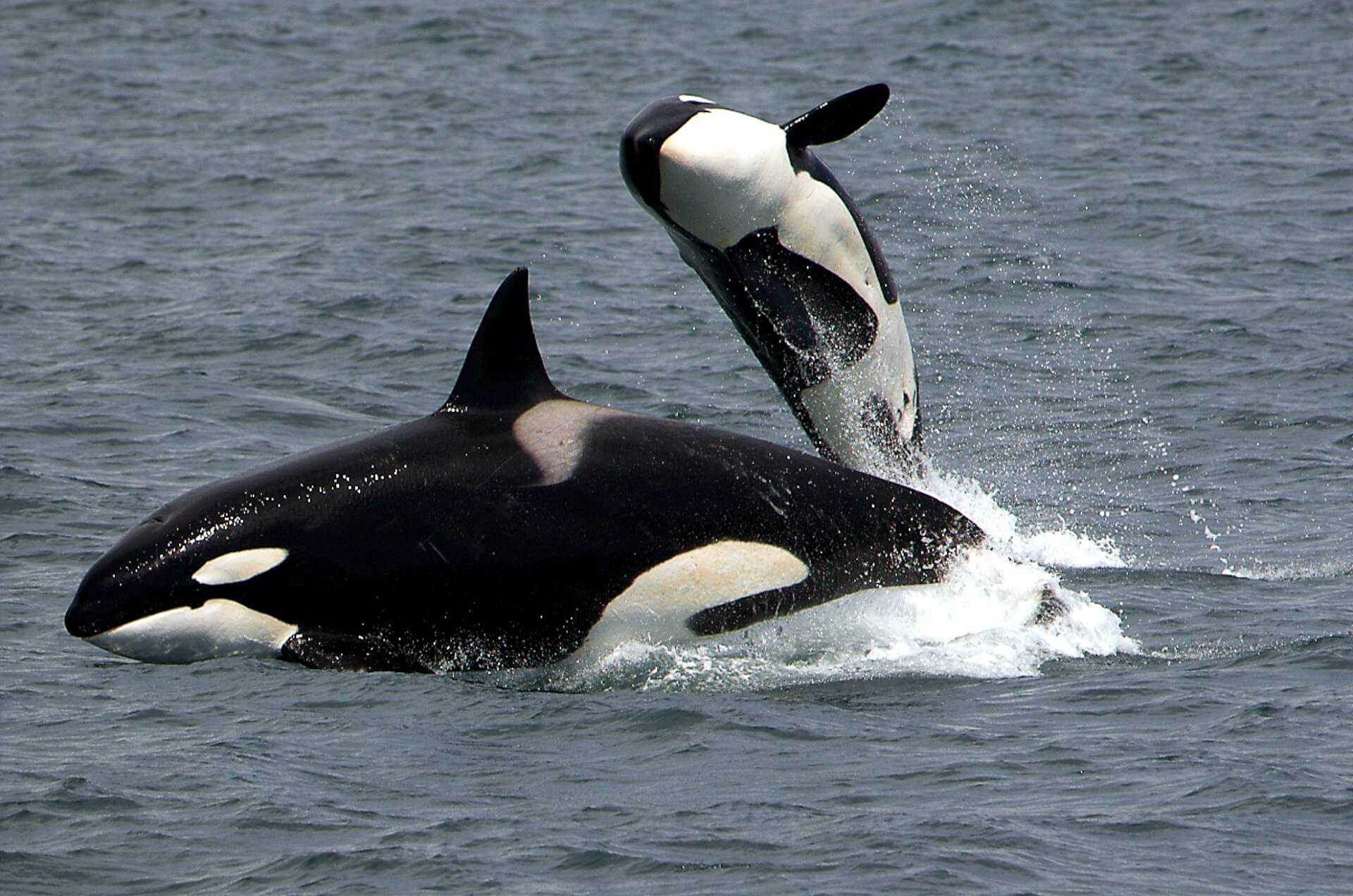5 Curious Animal Facts You'll Be Surprised to Know


Written and verified by the veterinarian and zootechnician Sebastian Ramirez Ocampo
According to an article reviewed in the journal PLoS Biology, there are an estimated 7.7 million animal species on the planet. Of these, about 80% are still waiting to be identified. However, most people don’t even know the peculiarities and behaviors of those species already discovered. Because of this, many curious animal facts are waiting to be revealed.
If you are interested in the animal world, you’re in the right place. We invite you to explore everything from exclusive behaviors to characteristics that several species share with humans. Don’t miss it!
1. In these species, the males take on the role of the mother
Although it may be hard to believe, in some marine species there is a role reversal: it is the male who becomes pregnant. This is the case of the syngnathids, a family of fishes that includes seahorses, pipefishes, and water dragons.
According to an article published in the journal Proceedings of the National Academy of Sciences, it is a natural phenomenon that seems to be exclusive to these curious specimens. Moreover, as stated by its authors, it’s a pregnancy similar to that which occurs in mammalian animals.
This is because males provide nutrients, immunization, oxygenation, and protection to the embryos they carry.
In seahorses, this marvelous reproductive act begins with a ceremonial dance in which the male and female intertwine their tails. After these movements, the female deposits her eggs inside a sac located in the male’s belly, who then fertilizes them with his sperm.
According to a publication in the journal Current Biology, this behavior ensures that males are the true fathers of their offspring. This situation does not occur with other animal species.
Similarly, as discussed in this paper, female pipefish are the ones that develop striking features such as stripes on their bodies, as they are the ones that must struggle to find a mate to reproduce.

2. Some mammals lay eggs
Carrying on with our theme of reproductive aspects and animal fun facts, we present the monotremes. These mammals are characterized by their ability to lay eggs. Only two animals are classified in this select group: the platypus and the echidna.
Research reported in the journal Genome Dynamics specifies that monotremes are considered “alternative mammals”, which separated from their placental congeners some 210 million years ago.
Likewise, as the authors argue, certain genetic characteristics of these animals are similar to a few of the reptiles, such as the difference in the size of their chromosomes.
However, despite not having breasts with nipples and laying eggs, they are considered mammals because they feed their offspring with mother’s milk. This is achieved through mammary patches -located in the abdomen- that only females possess.
In addition, breastfeeding provides neonates with nutrients, immunity, and antimicrobial protection, as is the case with all mammalian animals. This is the finding of a study in the journal Genome Biology and Evolution.
Among other things, the echidna lays one egg per year, which hatches for ten days in a pouch in its belly. The platypus, on the other hand, lays 1 to 3 eggs, and the incubation process in the pouch lasts an average of 21 days.

3. When the expression “sleeping with one eye open” becomes literal
Sleep is a fundamental aspect of the biology of living things. It allows the body and brain to recover from daytime activities and recharge their energy to take on new challenges. However, there are species that, due to the dangerous environment they live in, can’t allow themselves to fall completely into a deep sleep.
This is the case of some marine mammals such as the dolphin and certain birds such as the frigate bird. Both species sleep only one hemisphere of the brain when resting, while the other remains awake. This phenomenon is known as “unihemispheric sleep.”
Thanks to this ability, they can obtain the benefits of sleep and, at the same time, be alert to any type of threat.
According to a study published in the journal PLOS ONE – focused on the evaluation of dolphins’ ability to be active during the day and night – it was concluded that they can remain in this state, and retain full faculties, for at least 15 days at a time. However, it’s estimated that they can endure even more, as the researchers were the ones who ended the experiment.
For their part, frigate birds can fly for 10 days with only one eye closed and one hemisphere of the brain asleep. This is according to research in the journal Nature. In addition, there are other species that are suggested to exhibit this behavior. This is the case for some reptiles, such as the great crocodile.

4. Birds are smarter than you think
For years, researchers dedicated to the study of birds have wondered how it’s possible that these animals – with such a small brain – manage to perform such complex tasks. A study published in the journal Proceedings of the National Academy of Sciences of the United States of America has found a possible explanation. has found a possible explanation.
According to this paper, the composition of the bird brain is different from that of mammals. On the one hand, although birds have a small brain, they have a higher concentration of neurons in their forebrain. This area in particular is associated with intelligent behavior.
In addition, the neurons of these animals are much smaller. For this reason, they’re packed more densely and in greater numbers than in mammals.
Contrary to what was believed, brain size doesn’t play a fundamental role in the cognitive capacity of these species. In fact, birds have developed a better use of their brain mass, compared to other animals, during evolution.
Thanks to this anatomical composition, birds think logically and have the ability to perform tasks that were thought to be exclusive to primates.
For example, according to a study reported in the journal Current Opinion in Neurobiology, the New Caledonian crow has the ability to make and use branches as tools to obtain food. There’s also the case of magpies, which according to a publication in the journal PLoS Biology can recognize themselves in front of a mirror.

5. Just as in women, there are animals that suffer from menopause
This is one of the most surprising animal fun facts. Menopause is a biological process that all women go through when they reach a certain age. During this stage of life, they lose their reproductive capacity when ovulation ceases.
However, we are not the only animal species to experience these changes, as it also occurs in some odontocetes. Specifically, it occurs in killer whales, pilot whales, beluga whales, and narwhals. These mammals have complex social structures.
As in humans, the females of these species play a role beyond simply the reproductive one. In fact, mothers who enter menopause take care of the youngest animals in order to ensure a higher survival rate. In other words, they provide protection to their “grandchildren”.
This evolutionary phenomenon, known as the “grandmother theory”, is explained in a study published in the journal Nature. This research specifies that killer whale neonates – born in communities with many young mothers – are 1.7 times more likely to die than those who are cared for by older mothers.
On the other hand, to explain why menopause occurs only in humans and in these 4 cetaceans, research reported in the Journal of Theoretical Biology established three parameters:
- Longevity
- Cohabitation in groups of several individuals
- A difference of 30% -or more- in the average lifespan between males and females.
Maybe you are wondering why an animal such an elephant doesn’t experience menopause? Although they are a long-lived species and live in a community, the reason is that they don’t fulfill the third aspect mentioned.

Let’s take care of animals
According to estimates by the World Wildlife Fund (WWF), in the last 50 years, the populations of mammals, birds, fish, reptiles and amphibians have decreased by 68%. Furthermore, according to figures from the International Union for Conservation of Nature, more than 42,100 species are in danger of extinction.
This situation should make us rethink the actions taken to curb this problem. If you found these curious animal facts interesting, it is time to become aware of the importance of these species in the ecosystems of the entire planet. Always remember to respect and protect all types of life you encounter.
We hope you’ve enjoyed our curious animal facts today!
According to an article reviewed in the journal PLoS Biology, there are an estimated 7.7 million animal species on the planet. Of these, about 80% are still waiting to be identified. However, most people don’t even know the peculiarities and behaviors of those species already discovered. Because of this, many curious animal facts are waiting to be revealed.
If you are interested in the animal world, you’re in the right place. We invite you to explore everything from exclusive behaviors to characteristics that several species share with humans. Don’t miss it!
1. In these species, the males take on the role of the mother
Although it may be hard to believe, in some marine species there is a role reversal: it is the male who becomes pregnant. This is the case of the syngnathids, a family of fishes that includes seahorses, pipefishes, and water dragons.
According to an article published in the journal Proceedings of the National Academy of Sciences, it is a natural phenomenon that seems to be exclusive to these curious specimens. Moreover, as stated by its authors, it’s a pregnancy similar to that which occurs in mammalian animals.
This is because males provide nutrients, immunization, oxygenation, and protection to the embryos they carry.
In seahorses, this marvelous reproductive act begins with a ceremonial dance in which the male and female intertwine their tails. After these movements, the female deposits her eggs inside a sac located in the male’s belly, who then fertilizes them with his sperm.
According to a publication in the journal Current Biology, this behavior ensures that males are the true fathers of their offspring. This situation does not occur with other animal species.
Similarly, as discussed in this paper, female pipefish are the ones that develop striking features such as stripes on their bodies, as they are the ones that must struggle to find a mate to reproduce.

2. Some mammals lay eggs
Carrying on with our theme of reproductive aspects and animal fun facts, we present the monotremes. These mammals are characterized by their ability to lay eggs. Only two animals are classified in this select group: the platypus and the echidna.
Research reported in the journal Genome Dynamics specifies that monotremes are considered “alternative mammals”, which separated from their placental congeners some 210 million years ago.
Likewise, as the authors argue, certain genetic characteristics of these animals are similar to a few of the reptiles, such as the difference in the size of their chromosomes.
However, despite not having breasts with nipples and laying eggs, they are considered mammals because they feed their offspring with mother’s milk. This is achieved through mammary patches -located in the abdomen- that only females possess.
In addition, breastfeeding provides neonates with nutrients, immunity, and antimicrobial protection, as is the case with all mammalian animals. This is the finding of a study in the journal Genome Biology and Evolution.
Among other things, the echidna lays one egg per year, which hatches for ten days in a pouch in its belly. The platypus, on the other hand, lays 1 to 3 eggs, and the incubation process in the pouch lasts an average of 21 days.

3. When the expression “sleeping with one eye open” becomes literal
Sleep is a fundamental aspect of the biology of living things. It allows the body and brain to recover from daytime activities and recharge their energy to take on new challenges. However, there are species that, due to the dangerous environment they live in, can’t allow themselves to fall completely into a deep sleep.
This is the case of some marine mammals such as the dolphin and certain birds such as the frigate bird. Both species sleep only one hemisphere of the brain when resting, while the other remains awake. This phenomenon is known as “unihemispheric sleep.”
Thanks to this ability, they can obtain the benefits of sleep and, at the same time, be alert to any type of threat.
According to a study published in the journal PLOS ONE – focused on the evaluation of dolphins’ ability to be active during the day and night – it was concluded that they can remain in this state, and retain full faculties, for at least 15 days at a time. However, it’s estimated that they can endure even more, as the researchers were the ones who ended the experiment.
For their part, frigate birds can fly for 10 days with only one eye closed and one hemisphere of the brain asleep. This is according to research in the journal Nature. In addition, there are other species that are suggested to exhibit this behavior. This is the case for some reptiles, such as the great crocodile.

4. Birds are smarter than you think
For years, researchers dedicated to the study of birds have wondered how it’s possible that these animals – with such a small brain – manage to perform such complex tasks. A study published in the journal Proceedings of the National Academy of Sciences of the United States of America has found a possible explanation. has found a possible explanation.
According to this paper, the composition of the bird brain is different from that of mammals. On the one hand, although birds have a small brain, they have a higher concentration of neurons in their forebrain. This area in particular is associated with intelligent behavior.
In addition, the neurons of these animals are much smaller. For this reason, they’re packed more densely and in greater numbers than in mammals.
Contrary to what was believed, brain size doesn’t play a fundamental role in the cognitive capacity of these species. In fact, birds have developed a better use of their brain mass, compared to other animals, during evolution.
Thanks to this anatomical composition, birds think logically and have the ability to perform tasks that were thought to be exclusive to primates.
For example, according to a study reported in the journal Current Opinion in Neurobiology, the New Caledonian crow has the ability to make and use branches as tools to obtain food. There’s also the case of magpies, which according to a publication in the journal PLoS Biology can recognize themselves in front of a mirror.

5. Just as in women, there are animals that suffer from menopause
This is one of the most surprising animal fun facts. Menopause is a biological process that all women go through when they reach a certain age. During this stage of life, they lose their reproductive capacity when ovulation ceases.
However, we are not the only animal species to experience these changes, as it also occurs in some odontocetes. Specifically, it occurs in killer whales, pilot whales, beluga whales, and narwhals. These mammals have complex social structures.
As in humans, the females of these species play a role beyond simply the reproductive one. In fact, mothers who enter menopause take care of the youngest animals in order to ensure a higher survival rate. In other words, they provide protection to their “grandchildren”.
This evolutionary phenomenon, known as the “grandmother theory”, is explained in a study published in the journal Nature. This research specifies that killer whale neonates – born in communities with many young mothers – are 1.7 times more likely to die than those who are cared for by older mothers.
On the other hand, to explain why menopause occurs only in humans and in these 4 cetaceans, research reported in the Journal of Theoretical Biology established three parameters:
- Longevity
- Cohabitation in groups of several individuals
- A difference of 30% -or more- in the average lifespan between males and females.
Maybe you are wondering why an animal such an elephant doesn’t experience menopause? Although they are a long-lived species and live in a community, the reason is that they don’t fulfill the third aspect mentioned.

Let’s take care of animals
According to estimates by the World Wildlife Fund (WWF), in the last 50 years, the populations of mammals, birds, fish, reptiles and amphibians have decreased by 68%. Furthermore, according to figures from the International Union for Conservation of Nature, more than 42,100 species are in danger of extinction.
This situation should make us rethink the actions taken to curb this problem. If you found these curious animal facts interesting, it is time to become aware of the importance of these species in the ecosystems of the entire planet. Always remember to respect and protect all types of life you encounter.
We hope you’ve enjoyed our curious animal facts today!
All cited sources were thoroughly reviewed by our team to ensure their quality, reliability, currency, and validity. The bibliography of this article was considered reliable and of academic or scientific accuracy.
- Branstetter, B. K., Finneran, J. J., Fletcher, E. A., Weisman, B. C., & Ridgway, S. H. (2012). Dolphins can maintain vigilant behavior through echolocation for 15 days without interruption or cognitive impairment. PloS one, 7(10), e47478. https://journals.plos.org/plosone/article?id=10.1371/journal.pone.0047478#:~:text=In%20dolphins%2C%20natural%20selection%20has,respiratory%20demands%20of%20the%20ocean.
- Dalton D. (2022). How evolutionary biology can explain why human and a few marine mammal females are the only ones that are menopausal. Journal of Theoretical Biology, 543, 111123. https://www.sciencedirect.com/science/article/abs/pii/S0022519322001217?via%3Dihub
- Ellis, S., Franks, D. W., Nattrass, S., Currie, T. E., Cant, M. A., Giles, D., Balcomb, K. C., & Croft, D. P. (2018). Analyses of ovarian activity reveal repeated evolution of post-reproductive lifespans in toothed whales. Scientific reports, 8(1), 12833. https://www.nature.com/articles/s41598-018-31047-8
- Emery, N. J., & Clayton, N. S. (2009). Tool use and physical cognition in birds and mammals. Current Opinion in Neurobiology, 19(1), 27–33. https://www.sciencedirect.com/science/article/abs/pii/S0959438809000063?via%3Dihub
- Enjapoori, A. K., Grant, T. R., Nicol, S. C., Lefèvre, C. M., Nicholas, K. R., & Sharp, J. A. (2014). Monotreme lactation protein is highly expressed in monotreme milk and provides antimicrobial protection. Genome Biology and Evolution, 6(10), 2754–2773. https://www.ncbi.nlm.nih.gov/pmc/articles/PMC4224336/
- Fondo Mundial para la Naturaleza (WWF). (24 de febrero de 2021). Extinción de especies: un peligro para la biodiversidad y el planeta. https://www.wwf.org.co/?365991/Extincion-de-especies-un-peligro-para-la-biodiversidad-y-el-planeta
- Johnstone, R. A., & Cant, M. A. (2010). The evolution of menopause in cetaceans and humans: the role of demography. Proceedings. Biological Sciences, 277(1701), 3765–3771. https://www.ncbi.nlm.nih.gov/pmc/articles/PMC2992708/
- Evolution: How menopause emerged in whales. (2017). Nature, 541(7637), 263. https://www.nature.com/articles/541263c
- Jones, A. G., & Avise, J. C. (2003). Male pregnancy. Current Biology: CB, 13(20), R791. https://www.cell.com/current-biology/fulltext/S0960-9822(03)00729-2?_returnURL=https%3A%2F%2Flinkinghub.elsevier.com%2Fretrieve%2Fpii%2FS0960982203007292%3Fshowall%3Dtrue
- Kelly, M. L., Peters, R. A., Tisdale, R. K., & Lesku, J. A. (2015). Unihemispheric sleep in crocodilians?. The Journal of Experimental Biology, 218(Pt 20), 3175–3178. https://journals.biologists.com/jeb/article/218/20/3175/14310/Unihemispheric-sleep-in-crocodilians
- Koina, E., Fong, J., & Graves, J. A. M. (2006). Marsupial and monotreme genomes. Genome Dynamics, 2, 111–122. https://www.researchgate.net/publication/23220248_Marsupial_and_Monotreme_Genomes
- Mascetti G. G. (2016). Unihemispheric sleep and asymmetrical sleep: behavioral, neurophysiological, and functional perspectives. Nature and Science of Sleep, 8, 221–238. https://www.ncbi.nlm.nih.gov/pmc/articles/PMC4948738/
- Mora, C., Tittensor, D. P., Adl, S., Simpson, A. G., & Worm, B. (2011). How many species are there on Earth and in the ocean?. PLoS Biology, 9(8), e1001127. https://www.ncbi.nlm.nih.gov/pmc/articles/PMC3160336/
- Olkowicz, S., Kocourek, M., Lučan, R. K., Porteš, M., Fitch, W. T., Herculano-Houzel, S., & Němec, P. (2016). Birds have primate-like numbers of neurons in the forebrain. Proceedings of the National Academy of Sciences of the United States of America, 113(26), 7255–7260. https://www.ncbi.nlm.nih.gov/pmc/articles/PMC4932926/
- Prior, H., Schwarz, A., & Güntürkün, O. (2008). Mirror-induced behavior in the magpie (Pica pica): evidence of self-recognition. PLoS Biology, 6(8), e202. https://journals.plos.org/plosbiology/article?id=10.1371/journal.pbio.0060202#:~:text=We%20investigated%20mirror%2Dinduced%20behavior,showed%20spontaneous%20mark%2Ddirected%20behavior.
- Rattenborg, N. C., Voirin, B., Cruz, S. M., Tisdale, R., Dell’Omo, G., Lipp, H. P., Wikelski, M., & Vyssotski, A. L. (2016). Evidence that birds sleep in mid-flight. Nature Communications, 7, 12468. https://www.nature.com/articles/ncomms12468
- Roth, O., Solbakken, M., Torresen, O., & Jentoft, S. (2020). Evolution of male pregnancy associated with remodeling of canonical vertebrate immunity in seahorses and pipefishes. Proceedings of the National Academy of Science, 117 (17), 9431-9439. https://www.pnas.org/doi/10.1073/pnas.1916251117
- Unión Internacional para la Conservación de la Naturaleza. (2022). Lista Roja de la IUCN. Consultado el 7 de junio de 2023. https://www.iucnredlist.org/es
This text is provided for informational purposes only and does not replace consultation with a professional. If in doubt, consult your specialist.








